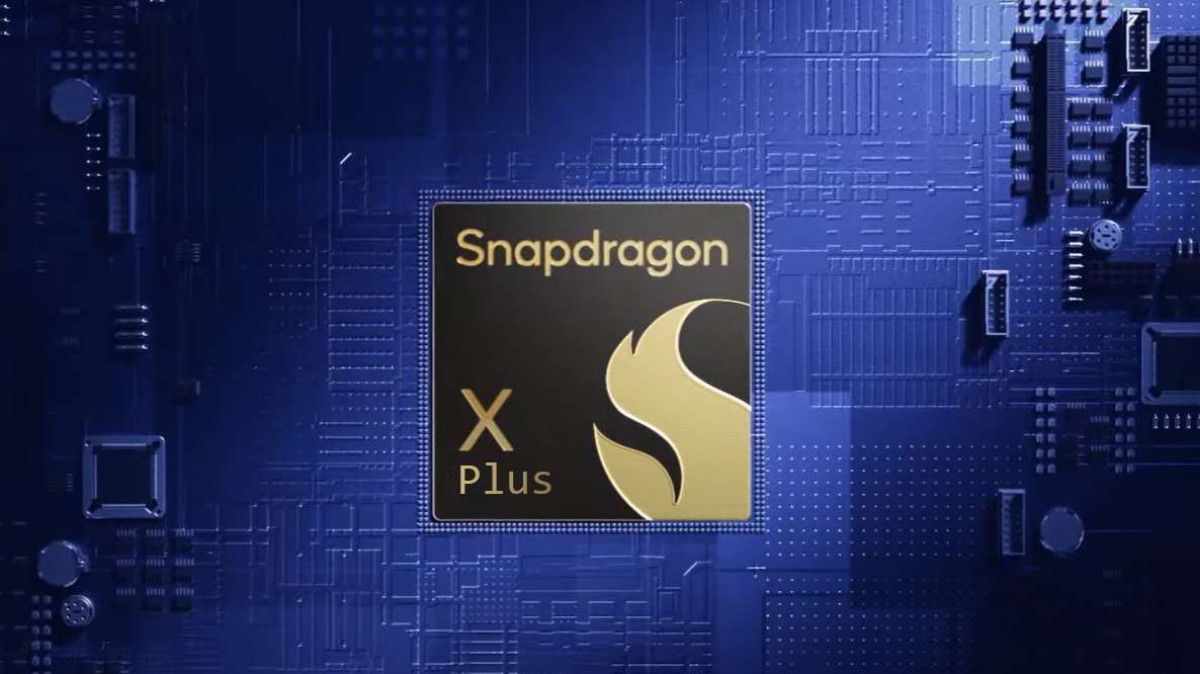Highlights
-
Snapdragon X Plus offers an affordable ARM-based computing option.
-
Built on the success of the Snapdragon X Elite, featuring a 10-core setup.
-
Ensures seamless connectivity with X65 modem support.
-
Aims to democratize ARM computing for Windows laptops, expanding market reach.
Qualcomm is paving the way for a more diverse and accessible future with its latest offering, the ‘Snapdragon X Plus’.
Building upon the success of the highly anticipated Snapdragon X Elite, this new chip promises to bring the power and efficiency of ARM-based computing to a broader range of Windows laptops.
Snapdragon X Elite

The Snapdragon X Elite, unveiled last year, was Qualcomm’s ambitious foray into the world of Windows on ARM, aiming to replicate the success of Apple’s M-series chips in the MacBook lineup.
Early impressions of the Elite chip have been overwhelmingly positive, with reports suggesting that it can even outperform Apple’s latest M3 processors, often by a significant margin.
However, as promising as the Snapdragon X Elite may be, its cutting-edge technology and advanced capabilities inevitably come with a higher price tag, potentially limiting its accessibility to a wider consumer base.
Enter the ‘Snapdragon X Plus’, a more affordable alternative that aims to democratize the benefits of ARM-based computing for Windows laptops.
According to reports from WinFuture, the Snapdragon X Plus is a cut-down version of the Elite, potentially featuring ten cores instead of the Elite’s 12-core setup.
While specific details remain scarce, the chip is expected to bear the model number “X1P” in contrast to the Elite’s “X1E”, and will still support the X65 modem, ensuring seamless connectivity.
Snapdragon X Plus

The introduction of the Snapdragon X Plus not only represents a more cost-effective option for consumers but also signifies Qualcomm’s commitment to expanding the reach of its ARM-based technologies.
By offering a more affordable alternative, Qualcomm is poised to make inroads into a broader market segment, potentially disrupting the traditional dominance of x86-based processors in the Windows laptop space.
As the integration between Windows and Android continues to deepen, the presence of ARM-based chips like the Snapdragon X Elite and the Snapdragon X Plus could usher in a new era of seamless cross-platform experiences.

Imagine a future where your Windows laptop effortlessly syncs with your Android smartphone, offering a unified and cohesive computing experience.
While laptops powered by the flagship Snapdragon X Elite are expected to hit the market in the coming months, the introduction of the Snapdragon X Plus promises to accelerate the adoption of ARM-based computing in the Windows ecosystem.
As Qualcomm continues to push the boundaries of innovation, consumers can look forward to a wider range of choices, elevated performance, and, perhaps most importantly, increased accessibility to cutting-edge technology.
FAQs
What is the Snapdragon X Plus?
The Snapdragon X Plus is Qualcomm’s latest chip designed for Windows laptops, building upon the success of the Snapdragon X Elite. It’s a more affordable alternative that aims to bring the efficiency and power of ARM-based computing to a wider audience. Featuring a slightly reduced core count compared to the Elite, it maintains high performance and connectivity standards.
How does the Snapdragon X Plus compare to the Snapdragon X Elite?
While both chips are part of Qualcomm’s push into ARM-based Windows computing, the Snapdragon X Plus is positioned as a more accessible option, potentially featuring ten cores compared to the Elite’s twelve. Despite this, it retains essential features like the X65 modem for seamless connectivity, striking a balance between performance and affordability.
Why is Qualcomm offering a more affordable ARM-based chip for Windows laptops?
Qualcomm’s introduction of the Snapdragon X Plus reflects a strategic move to democratize ARM-based computing. By offering a chip that maintains high performance at a lower price point, Qualcomm aims to make this advanced technology accessible to a broader range of consumers and manufacturers, thus expanding its market presence.
What advantages do ARM-based chips offer for Windows laptops?
ARM-based chips like the Snapdragon X Plus and X Elite offer several advantages for Windows laptops, including improved battery life, enhanced connectivity, and potentially better integration with mobile ecosystems. They represent a shift towards more efficient, mobile-inspired computing, challenging the traditional dominance of x86 processors.
Also Read: Qualcomm Snapdragon 8 Gen 4 Could Revolutionise Flagship Smartphones with 4GHz Clockspeed
Also Read: Qualcomm Snapdragon X Elite Set to Transform PCs with Next Windows Update in Mid-2024
